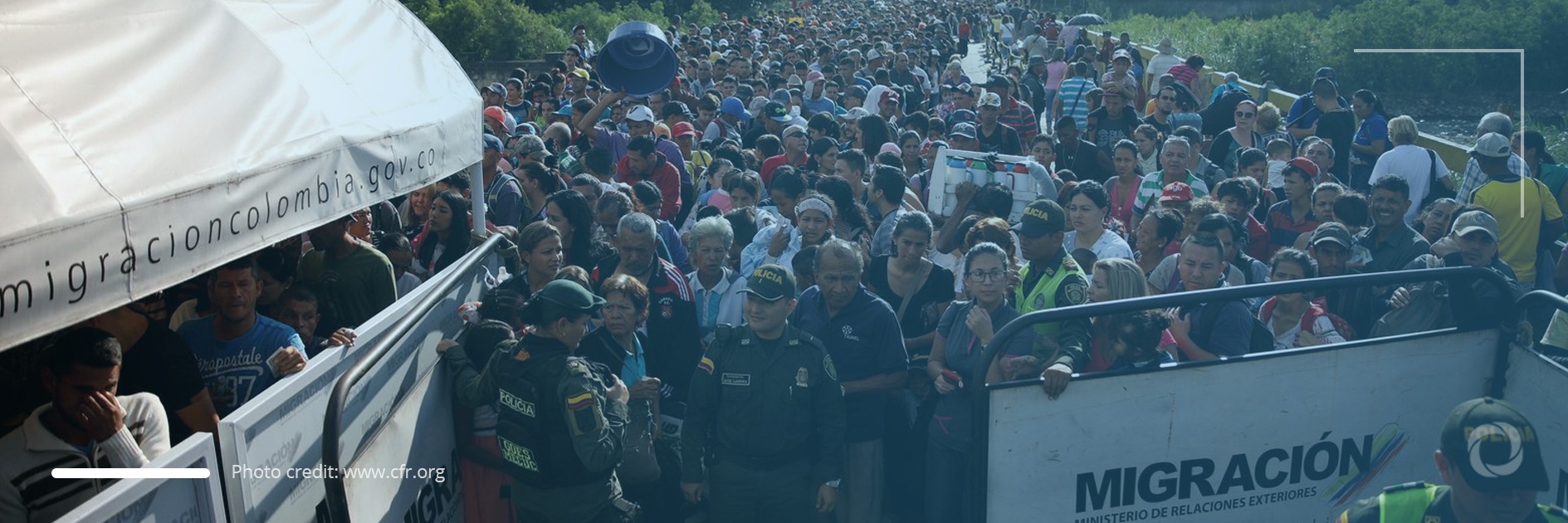The number of Venezuelan migrants has recently reached another record, as this Latin American country is devastated by a humanitarian crisis, forcing increasingly more people to flee, mostly towards South, to other countries of the region.
How many Venezuelans have fled?
The International Organization for Migration has estimated that since 2015 over 5.6 million Venezuelans have fled the country, being the second largest group of refugees after Syrians worldwide. Venezuelan migrants’ influx also produced the largest migrant crisis in the modern history of Latin America.
“Never in our history in Latin America have we faced such movement of people out of a country that was one of the richest in the region and a country that is not at war,” said Eduardo Stein, special representative of the UNHCR, the UN refugee agency, and the International Organization for Migration (IOM).
Where do Venezuelans flee?
About 80% of all Venezuelans who fled their country are hosted by 17 states of Latin America and the Caribbean, most of which are developing countries. The first destination of Venezuelans is the neighboring Colombia, which received 31% of them (1.74 million), followed by Peru (18% – 1.2 million), Chile (8%, less than 0.5 million), and Ecuador (8%, 430,000). Venezuelans also target Argentina, some countries of Central America, and the Caribbean, such as Trinidad and Tobago, and recently they also have started to flee to the US by Mexican border.
What is the legal status of Venezuelans?
Under the 1951 Refugee Convention, Venezuelans are eligible to apply for asylum due to the ongoing humanitarian crisis in their country of origin. UNHCR also called on the international community to recognize Venezuelans as refugees under the 1984 Cartagena Declaration, which has been signed by the majority of countries of the region and which includes wider criteria than the Refugee Convention.
Still Venezuelans cannot enjoy the same level of rights in every hosting country. Only Colombia decided to grant temporary protection status to all undocumented Venezuelans, who had arrived to the country before January 2021, making about 1.7 million Venezuelans eligible. Within this framework, they can obtain access to employment, education, or health care system. In the US they also can get temporary protection status, but only for a period of 18 months.
Authorities of 11 countries of the region, including Peru, Ecuador, and Chile have been requiring visas from Venezuelans starting from 2019, which runs counter to the Cartagena Declaration which they signed. Still a lot of Venezuelans enter those countries illegally. The Ecuadorian government has recently announced intentions to regulate their status by implementing a new “normalization process.”
Chile enforced a new migration law on 20 April 2021. It allows to regulate migration status only for those migrants who entered the country before 18 March 2020 through official border control points. Those who passed the border illegally without passport control, have 180 days to leave, without sanctions, after that period they will be deported.
Why do Venezuelans migrate?
The Venezuelan migration crisis started between 2014 and 2015. People began to flee due to the deteriorating economic situation in the country. Venezuela is a typical petrostate. In 2018 99% of its export was based on oil, with the industry having contributed 35% to the country’s GDP. For many years the economy was practically mostly based on oil export and in 2014 the global oil market collapsed triggering recession of the Venezuelan economy, and then hyperinflation. The economic situation has started to deteriorate leading to poverty, unemployment, hunger, and the collapse of public services, including health care. At the beginning of 2015, the main group of migrants was middle class, while today fleeing people are from different social layers. Raising levels of hunger and poverty also provoked massive protests against the government. The authorities started to use state terror to suppress the opponents Moreover, years of corruption and mismanagement led to the devastation of basic infrastructure such as the power grid. Total blackouts have become commonplace, with people in various regions of the country being left without electricity very often. The global pandemic outbreak only deteriorated the situation. It is estimated that only 6% of Venezuelans enjoy food security.
International help
Despite the range and dimension of the Venezuelan migration, it has not earned that much resources and attention as the Syrian one. During a recent donors’ videoconference organized by Canada, different countries pledged to donate $1.5 billion, including $954 million in grants and $600 million in loans.
Dany Bahar, who is a senior fellow at the Brookings Institution, Washington DC based think-tank, said that there is “a big gap” in help for Venezuelan refugees, compared with other modern crises, such as Syria. According to him in 2020 the total funding per capita for Syrian refugees was 10 times larger than for Venezuelans.
Meanwhile, Venezuelans living in Latin American countries very often suffer from discrimination and racism. In Colombia especially in areas close to the Colombian-Venezuelan border, they live in poverty, experience hunger, living in provisional shelters. As borders have been recently opened, the Organization of American States (OAS) predicts that the number of Venezuelan migrants will increase to 7 million in 2021.

